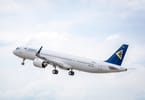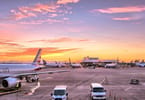But even so, that’s a very high level of death rates and is something which still continues to deter travelers and to make opening up of all the accoutrements of travel that much harder. As I mentioned before, Brazil is doing very, very badly and is the only country in the world, which is actually likely to suffer worse than the US.
I want to go back to something we said this time last year. I mean, we’re looking at borders closing and the whole health issue. This was the crisis we seriously could not afford to waste is what we were saying back then. There’s always some good to come out of a crisis. If you really look at things carefully, you can actually reset the direction of the industry. As we noted then, the glaring fact that’s so often overlooked is that the airline industry was perpetually unprofitable even before COVID-19.
So in simple terms, most government industry supportive action that was occurring at that time and it’s still occurring with, for example, the Biden administration pumping in another $14 billion into the airline industry to keep it going up until September. So, in simple terms, we said, most government industry supportive action looks no further than trying to perpetuate what has been demonstrated over decades to be a failed model.
An interesting little a bit from Warren Buffett, back in 2002, and I’ll quote from this. This appeared in Airline Leader just recently last year. Warren Buffett, “The airline business has been extraordinary. It’s eaten up capital over the past century like almost no other business because people seem to keep coming back to it and putting fresh money in. You’ve got huge fixed costs. You’ve got strong labor unions and you’ve got commodity pricing. That is not a great recipe for success.” It was 2002. 2016 Warren Buffett when taking a new stake in each of the biggest four airlines in the US was banking on them continuing to make substantial profits in the long term, because, one, he said they benefit from market concentration. And two, there is concentration in their ownership with a small number of hedge funds and others holding strong equity positions in each of the major carriers, in other words, market dominance. So, he invested deeply.
At that time, we rather bravely boldly and perhaps in pertinently said, Warren Buffett’s got it wrong again. This is in 2016. By 2020 at the latest, his US airline investments will all have started to unravel. And sure enough, in May last year he told shareholders that he had sold all of the company’s airline stocks admitting he’d made a mistake. Now governments are not admitting that, looking backwards in the rear-view mirror. The New York Times on the 19th of February this year just noted the fact that the four largest US airlines lost more than $31 billion last year. Industry overall is still shedding more than $115 million each day, according to A4A. These losses are even more stark when you consider the airlines have received $40 billion in federal grants to help pay employees and tens of billions of dollars more in low cost government loans. The problem is airlines these days cannot fly airplanes with enough people at high enough fares to break even. And then of course, as I mentioned, Congress has now voted an additional 14 billion to help the airlines pay their staff through till the end of the third quarter.
So how do waste a good crisis? Through COVID 19 we will have evolved from an unprofitable industry with an inadequate regulatory structure, to an unprofitable industry with an inadequate regulatory structure. And you have US dollars, 250 billion of additional debt propped up by governments. That’s wasting a good crisis. So, we’re living a dream, but is it really any more than a dream? With large doses of government funds injections and support everything’s going to return to normal soon. Don’t think so. How long does long haul full service function with less than half of its business yields, which is going to be the case probably for two years and with a debt burden that exceeds historic industry profits, just to service that debt.
So, when do we get back on the road again? Well, countries are slowly opening up, this is according to UNWTO recently, only 2% have no access restrictions. Although the positive is, and this is back to November so we don’t have most recent numbers, but back in November at least 44% of countries were actually partially open, which involved in most cases tests and quarantine requirements, significant quarantine requirements. So, they’re not really open in those terms. Converting optimism to reality, a lot of optimism obviously around vaccinations and to some extent, the fact that governments have started to learn how to control things nationally, and also start to talk internationally between themselves. The current rate of vaccinations though, less than 20% of the world’s population is expected to be inoculated this year, according to UBS. Developed nations, like the US and the UK will be vaccinated early and probably have the prospect of reopening once they get to herd immunity, that’s a very, very big market of course. I say the US and UK specifically, because mainland continental Europe may take a little bit longer.






















